Florida is not just famous for its sunny beaches and theme parks; it’s also home to a diverse array of tick species. These small arachnids play significant roles in various ecosystems but can also pose health risks to humans and animals alike.
From the notorious Deer Tick to the stealthy Lone Star Tick, Florida hosts a multitude of tick species with distinct characteristics and behaviors. Understanding the different species of ticks in Florida is crucial for effective management and prevention strategies.
In this exploration, we delve into the unique features, habitats, and potential risks associated with some of the most prevalent tick species in the Sunshine State.
Different Species of Ticks in Florida
1. American Dog Tick (Dermacentor variabilis)
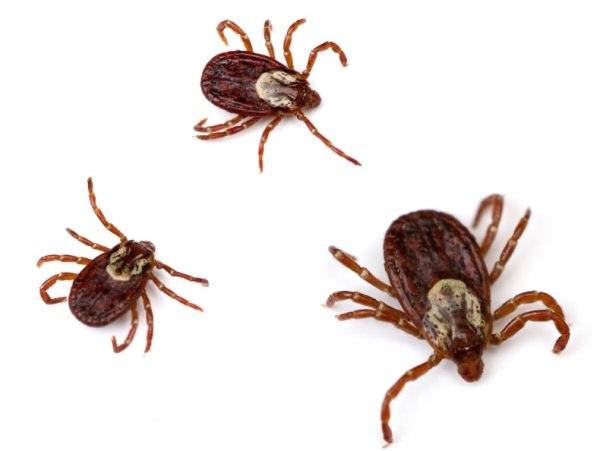
Identifying Characteristics
The American Dog Tick has a dark reddish-brown body, flat and oval-shaped, with brown and creamy white markings. Females feature a cream-colored shield, while males are speckled all over. Preferring wooded habitats and grassy areas with low vegetation, this tick is often found in urban areas around dogs and people.
Range and Hosts
American Dog Ticks primarily seek out dogs, often attaching to the head, ears, back, between the toes, or armpit. Remarkably, they can survive for two to three years without feeding on a host.
Impact and Disease Transmission
This tick species can transmit Rocky Mountain Spotted Fever to humans, a severe illness with a high mortality rate if untreated. They also transmit Tularemia, which causes symptoms like an ulcer at the bite site, fever, chills, and tender lymph nodes. Additionally, American Dog Ticks can cause Canine Tick Paralysis in dogs, leading to paralysis and potentially fatal respiratory failure if not removed. Children can also experience similar paralysis, with a recovery typically occurring within one to two days after tick removal, though the fatality rate is about 10%.
2. Groundhog Tick (Ixodes cookei)
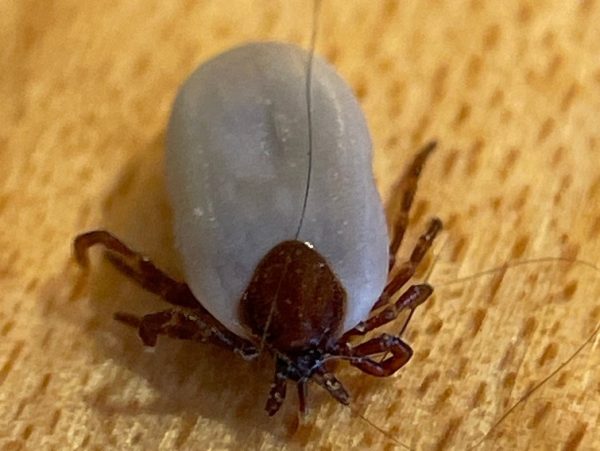
Identifying Characteristics
Adult Groundhog Ticks are distinguished by their coloration: males are dark reddish-brown on their backs, while females are lighter tan with a dark brown shield by their heads. Also known as the Woodchuck Tick, these ticks are typically found in or around the dens or nests of their hosts.
Range and Hosts
The Groundhog Tick primarily feeds on groundhogs and other small mammals, such as raccoons, foxes, weasels, skunks, porcupines, dogs, and cats. They can also feed on various bird species, including robins. Fortunately, they rarely bite humans.
Activity and Disease Transmission
Active during the summer, Groundhog Ticks reach peak numbers in July. Their life cycle is influenced by environmental conditions and host availability, with the ability to survive over a year without a blood meal. Although they do not transmit Lyme Disease, they are known carriers of Powassan Virus, which can cause severe brain infections and be potentially fatal.
3. Eastern Blacklegged Tick (Ixodes scapularis)
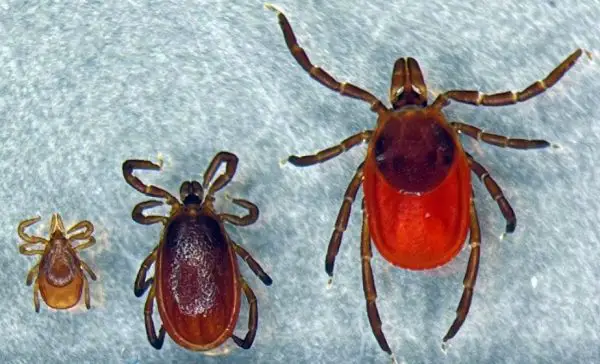
Identifying Characteristics
Adult male Eastern Blacklegged Ticks are dark brown or black with a light grayish-tan band around their abdomens. Adult females are reddish-orange on the shield with black legs, giving them their name. Also known as the Deer Tick, Black-legged Tick, or Bear Tick, this species is the primary carrier of Lyme Disease in Florida.
Range and Hosts
These ticks inhabit wooded, brushy areas where mammals like mice and deer are found. They are typically found in low vegetation or shrubs. In each life stage, Eastern Blacklegged Ticks are mobile and capable of feeding on humans or animals. Larvae prefer birds and mice, nymphs attach to any mammal, including humans, and adult ticks favor White-tailed Deer but will also feed on coyotes, humans, and other mammals.
Disease Transmission
Eastern Blacklegged Ticks can transmit several diseases, including Lyme disease, Babesiosis, Anaplasmosis, Ehrlichiosis, and Powassan Virus. They are slow feeders, typically feeding for three to five days. If a tick is infected, it usually takes 24-48 hours to transmit the disease to the host, though transmission can occur in as little as 16 hours. The nymphal stage is particularly dangerous to humans due to its small size, making it difficult to detect until after attachment and engorgement, by which time disease transmission may have already occurred.
4. Lone Star Tick (Amblyomma americanum)
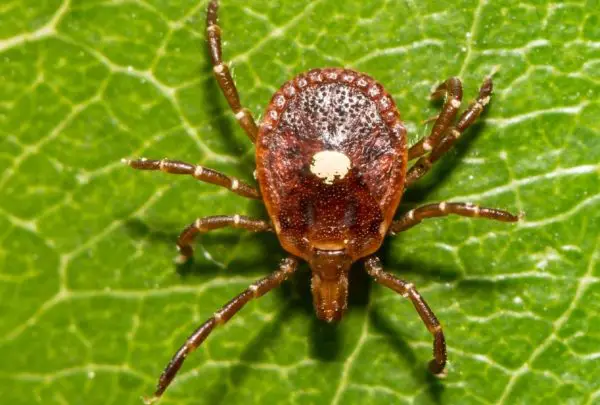
Identifying Characteristics
Lone Star Ticks have round bodies with colors ranging from reddish-brown to tan. Adult females are easily identified by a single white spot on their backs, while adult males have white markings on their legs and around their abdomens. Also known as Cricker Tick, Turkey Tick, or Northeastern Water Tick, these ticks prefer dry, forested areas with shrub undergrowth along rivers or streams near animal resting sites.
Range and Hosts
Lone Star Ticks are three-host ticks, meaning they feed on different hosts at each life stage. They can feed on a wide variety of hosts, including humans, at every stage. The most common host for adult Lone Star Ticks is the White-tailed Deer.
Disease Transmission
Lone Star Ticks can transmit several diseases, including Rocky Mountain Spotted Fever, Ehrlichiosis, Tularemia, Heartland Virus, Bourbon Virus, and Southern Tick-Associated Rash Illness (STARI). Lyme disease is uncommon in this species. Remarkably, Lone Star Ticks can also transmit Alpha-gal, a meat allergy. This occurs when the tick’s bite induces a delayed allergic reaction to meat products, potentially causing anaphylaxis, a life-threatening condition characterized by airway constriction and a drop in blood pressure.
5. Gulf Coast Tick (Amblyomma maculatum)

Identifying Characteristics
The larvae and nymphs of the Gulf Coast Tick are creamy-white with a reddish-brown speckled back. Adult males are copper brown with dark reddish-brown speckled backs, while adult females have dark reddish backs with cream-colored shields and copper legs. This species is primarily found in Florida in open or grassy fields and on the edges of wooded areas, where the shade of canopy cover provides an optimal climate for them when not on a host.
Range and Activity
Most active between June and September, Gulf Coast Ticks feed on a variety of birds and mammals, including humans.
Feeding Habits and Impact
Adult ticks typically attach their barbed mouthparts to the host’s ears for feeding, sometimes causing tissue damage and a condition known as Gotch Ear, especially in young calves, affecting their market value.
Disease Transmission
The Gulf Coast Tick can transmit diseases such as Rocky Mountain Spotted Fever, Rickettsia Parkeri, and Tick Paralysis to humans. In animals, it can transmit Canine Hepatozoonosis, Leptospirosis, Heartwater, and Tick Paralysis.
6. Rabbit Tick (Haemaphysalis leporispalustris)
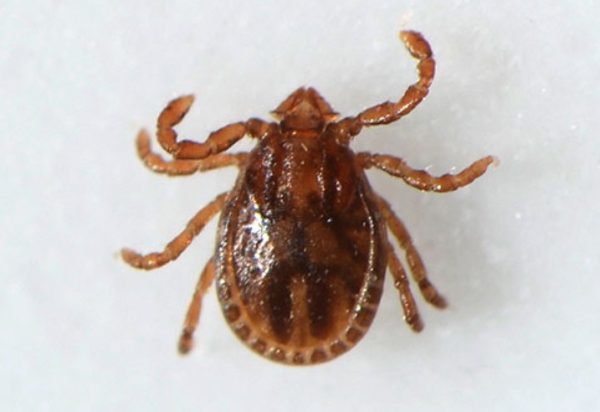
Identifying Characteristics
The adult Rabbit Tick is tan to reddish-tan, with females being darker and larger than males. Commonly known as the Grouse Tick, it inhabits forested areas, including coniferous, deciduous, and mixed forests, particularly in Florida. Rabbit Ticks are most active from spring to summer, with their numbers decreasing significantly in the fall.
Range and Hosts
The Rabbit Tick is a three-host tick, meaning it feeds on different hosts during each life stage. Adults prefer rabbits, typically attaching to the back, between the ears, or on the neck. Immature stages feed on ground-dwelling birds and other small mammals.
Disease Transmission
Rabbit Ticks can carry Rocky Mountain Spotted Fever, a severe illness with a high mortality rate if untreated, and Tularemia, which primarily affects rabbits and rodents. However, they rarely feed on humans, making disease transmission to humans uncommon.
7. Winter Tick (Dermacentor albipictus)
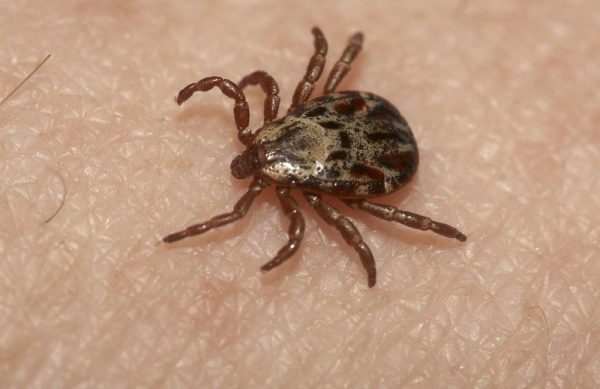
Identifying Characteristics
Adult female Winter Ticks are reddish-brown with a creamy white shield behind their heads, while adult males are dark brown with a crosshatch pattern on their backs. Also known as the Moose Tick, this tick thrives in areas with large hoofed animals, particularly in Florida. As a one-host tick, it remains on the same individual throughout all life stages, most commonly observed in the fall and winter.
Range and Hosts
Winter Ticks are not selective due to their lack of eyes, occasionally feeding on dogs, beavers, black bears, and coyotes. However, they rarely bite humans.
Impact and Complications
Although not known to carry diseases, Winter Ticks can cause significant harm to their hosts through heavy infestations, leading to severe anemia, skin irritation, hair loss, and potentially death. Deer and other mammals can easily remove ticks while grooming, but moose are less effective at this. Consequently, moose can become infested with over 100,000 ticks, which can lead to their death.
8. Brown Dog Tick (Rhipicephalus sanguineus)
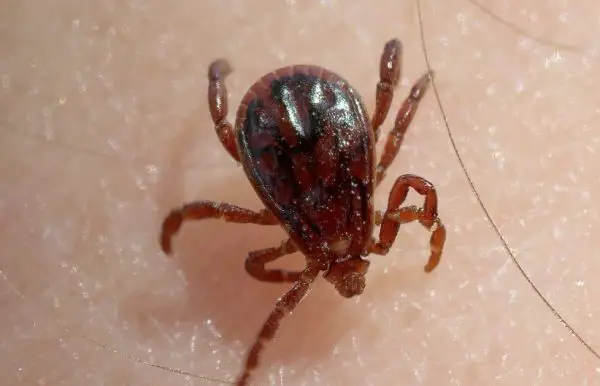
Identifying Characteristics
Both male and female Brown Dog Ticks are reddish-brown with elongated bodies. Males take small blood meals, whereas females can take large meals, causing them to increase significantly in size. Known as the Kennel Tick, this species is prevalent year-round in Florida, particularly in areas with domestic dogs, their preferred host.
Range and Habitat
Unlike other ticks in Florida, the Brown Dog Tick can complete its lifecycle indoors, making it common in homes. It is the most widespread tick species in Florida, thriving wherever dogs are present.
Impact and Disease Transmission
While Brown Dog Ticks rarely bite humans, they can transmit the bacterium that causes Rocky Mountain Spotted Fever if attached for at least six hours. Symptoms include high fever, chills, muscle aches, headaches, and sometimes a rash. They also transmit diseases to dogs, such as Canine Ehrlichiosis and Canine Babesiosis. If your dog exhibits unusual symptoms after a tick bite, consult a veterinarian promptly.






